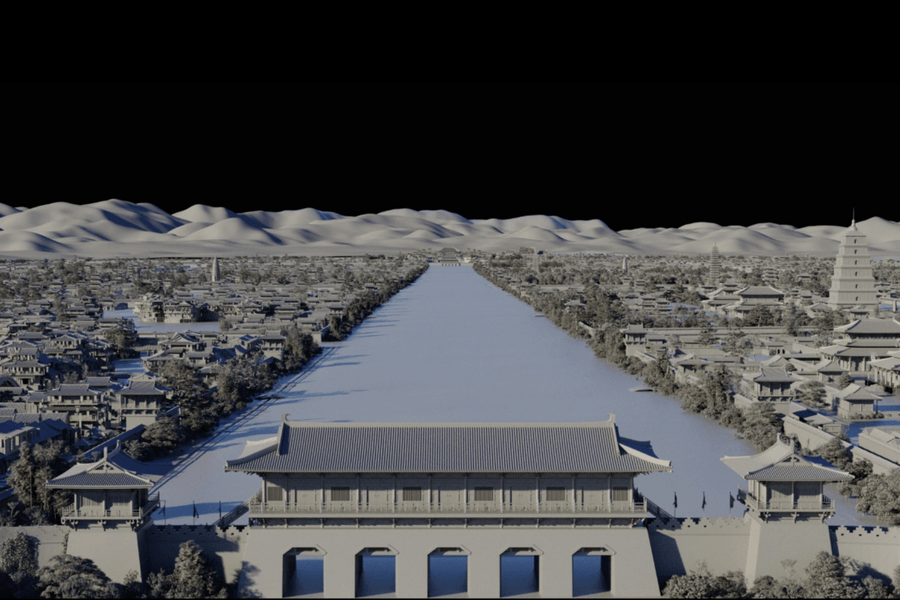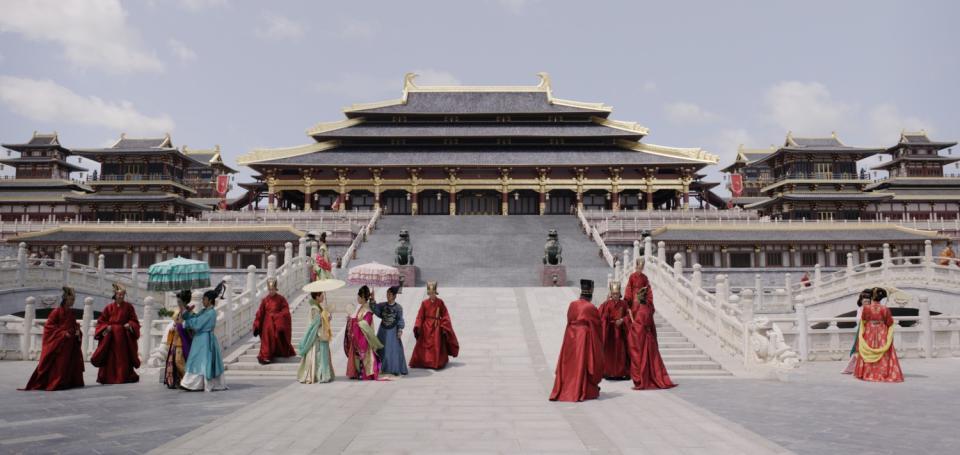How did they create 'Mulan's' massive Imperial City? Think giant digital Lego kit

- Oops!Something went wrong.Please try again later.
The live-action "Mulan" eliminated some of the animated version's fantasy elements in favor of a more grounded, historical-epic feeling. Therefore, the main mission of its Oscar-nominated visual effects teams was to make what magic remained seem almost casual and, oh yeah, to create an entire photorealistic Imperial City out of digital Legos.
"The biggest thing was world-building, really," said Weta Digital's Anders Langlands (a previous nominee for "The Martian"), adding that director Niki Caro "had a very clear idea that she wanted it to feel realistic for this essentially still-fantastical story."
The VFX helped the action scenes evoke classic martial-arts movies with invisible wire work and running up walls, and made sorcery such as witch Xianniang's (Chinese superstar Gong Li) shapeshifting occur with a minimum of bells and whistles.

"Niki wanted it to feel almost like a sleight-of-hand magic trick. The words that she kept using were ‘grace’ and ‘elegance,'" Langlands said of Xianniang's metamorphosis from her disguise as an Imperial soldier, to herself, to her hawk form.
"We were trying to create this transformation like a kind of a balletic moment, almost musical, and it's driven a lot by the rhythm of the shot. As the soldier’s walking, we're looking at the legs, and as each footstep progresses, we're changing little pieces more and more to turn him into the witch.
"In a lot of movies, it’s a big flashy effect so everyone in the audience knows something is happening. We were doing the opposite; you almost don't understand what's happening until it's already happened, in the same way that a traditional magic trick would be like, wave your hands a little bit and suddenly you notice a rabbit."
By far the biggest VFX task was crafting the Imperial City. They digitally captured an existing medieval city set on location in China, but that was only the foundation.

"The style of the Imperial Palace [set], they liked the steps, but the palace itself wasn't the style they were after, so that was a completely digital build," said Langlands.
They captured a massive amount of reference material for backgrounds and structures for "all the pieces that we need in order to do that big, wide city build. So we scanned the entire [location], which is something like 25 hectares.
"We chopped it up into little pieces, essentially to make like a little construction kit, like a little Lego kit of building pieces, different roof pieces and porticos. All those individual elements we could then rebuild to create an infinite variety of buildings by stitching those together, individual people's abodes or big palaces or monasteries that would then form the entire city.
"We needed to create hundreds of thousands of buildings to fill a city that size. It's bigger than Manhattan, the city that we were trying to create based on Chang'an, which was the capital of the empire in the Tang Dynasty. You had like a million people living there at its peak, and it was the capital of the empire for 10 dynasties."
Using historical documents, including ones demonstrating city-planning rules of the time, they created a photoreal digital city in which the action-packed third act could take place.
"From maps of the period, high-ranking government officials have their abodes listed .... It's probably a much more wealthy neighborhood, so we put up bigger, more ornate buildings there.

"Of course, then you put camera on it, you then say, 'Oh, it doesn't exactly look too cinematic.' So we needed to reorganize things, move districts around to bring more interesting buildings closer to camera. It's an interesting creative tension between historical accuracy and the needs of cinema."
They didn't stop at moving buildings around and creating new ones; the team made the earth move to avoid structuring the city too rigidly.
"We had maps of the river channels through the city that were accurate to the period. We changed the paths in order to give a more organic break up to the buildings" until they got the flow they wanted in a case of epic feng shui. "We had the city basically rebuild itself instantly based on this rule set we divined from historical maps.
"Then we had more time to give some loving care to individual areas we addressed by hand."
The team imagined citizens' daily routines to bring the city to life.
"There's a market area with the big curving river going through it, with bridges where you see people walking over the top and boats milling around on the river, people out enjoying the sun. We filled the streets with stores with awnings and banners advertising what they're selling. On the right, a little military academy with recruits doing martial-arts drills and a couple of platoons marching straight off the center of the main road.
"It's also about making these individual little vignettes that help us understand what city life is like in this world."
This story originally appeared in Los Angeles Times.

